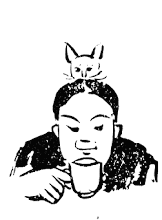Mirror and Mythology
Northrop Frye, Creation and Recreation (Toronto: University of Toronto Press, 1980), 6-7.
...
Our envelope, as I have called it, the cultural insulation that separates us from nature, is rather like (to use a figure that has haunted me from childhood) the window of a lit-up railway carriage at night. Most of the time it is a mirror of our own concerns, including our concern about nature. As a mirror, it fills us with the sense that the world is something which exists primarily in reference to us: it was created for us; we are the centre of it and the whole point of its existence. But occasionally the mirror turns into a real window, through which we can see only the vision of an indifferent nature that got along for untold aeons of time without us, seems to have produced us only by accident, and, if it were conscious, could only regret having done so. This vision propels us instantly into the opposite pole of paranoia, where we seem to be victims of a huge conspiracy, finding ourselves, through no will of our own, arbitrarily assigned to a dramatic role which we have been given no script to learn, in a state of what Heidegger calls ‘thrownness.”
The cultural aura, or whatever it is, that insulates us from nature consists among other things of words, and the verbal [Page 7] part of it is what I call a mythology, or the total structure of human creation conveyed by words, with literature at its centre. Such a mythology belongs to the mirror, not the window. It is designed to draw a circumference around human society and reflect its concerns, not to look directly at the nature outside.
...


没有评论:
发表评论